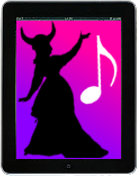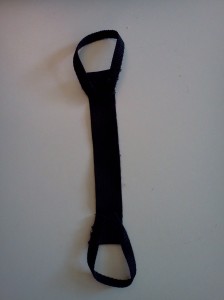I’d like to find a good and hopefully inexpensive portable scanning method. I find a lot of scores and other useful reference materials at the university music library, but I can’t check them out since I’m not a student or staff member. I’m also tired of feeding money into their copy machine and killing trees. I’d rather go straight to digital and skip paper copies entirely.
I tried photographing whole pages with my Android smartphone, but since it has no flash (and the lighting conditions in the library were not great), the results were illegible. I also think my phone’s camera resolution is not high enough – it’s a low-end smartphone.
If you have an iPhone or other smartphone with a better camera, you might try some of the scanning apps. Courtesy of the Technology in Music Education blog, here is a good writeup about using TurboScan for iPhone to scan sheet music, with photos showing how the image quality of the score compares to a desktop scanner. Not too shabby!
Also, there are smartphone scanning stands that basically hold your camera phone at the right distance from a sheet of paper and keep everything steady as you snap a picture. They seem pretty foldable/portable, too:
Here are do-it-yourself instructions for making an iPhone document scanner out of corrugated cardboard as shown below (or you can buy it pre-made from the person who designed it):
The SCANDY smartphone scanning stand is a product in development: [UPDATE: SCANDY is now available for purchase through Amazon and other sellers!]
Scanbox looks like an excellent portable iPhone/smartphone scanning stand. It folds down flat, and the latest model even contains small LED lights to ensure adequate lighting on your document. The main disadvantages are that the height is not adjustable (for scanning large sheets) and it seems difficult or impossible to place a large bound book in the scanning area.
As for the iPad: I haven’t tried photographing whole pages with my iPad yet, but here are some photos of another singer using the iPad to scan music and import it to forScore (Facebook login required to see the photo album). She got some blurring that wasn’t too bad for the music, but that really degraded the legibility of the text underlay. Also, having a tripod or stand for the iPad camera might have helped reduce blurring. [UPDATE: Since writing this post, I have found more iPad scanning options – see iPad scanning stand / document camera products and iPad scanning stand / document camera DIY ideas]
For now, I am using using my trusty old CanoScan LiDE 50 flatbed scanner and hauling it to the library as needed:

It is actually not too terrible. This scanner fits in a laptop bag and is powered off of my laptop’s USB port (of course I then need to haul my laptop along too). The price was right – I picked it up used at a bargain price from the local computer salvage store. It also works well for bound books, which is an advantage over some of the portable handheld scanners I’ve seen that are sheet-feed only. I did shop around for some of those portable scanners, but my impression was that they are expensive given the image quality they produce.
Related posts:











